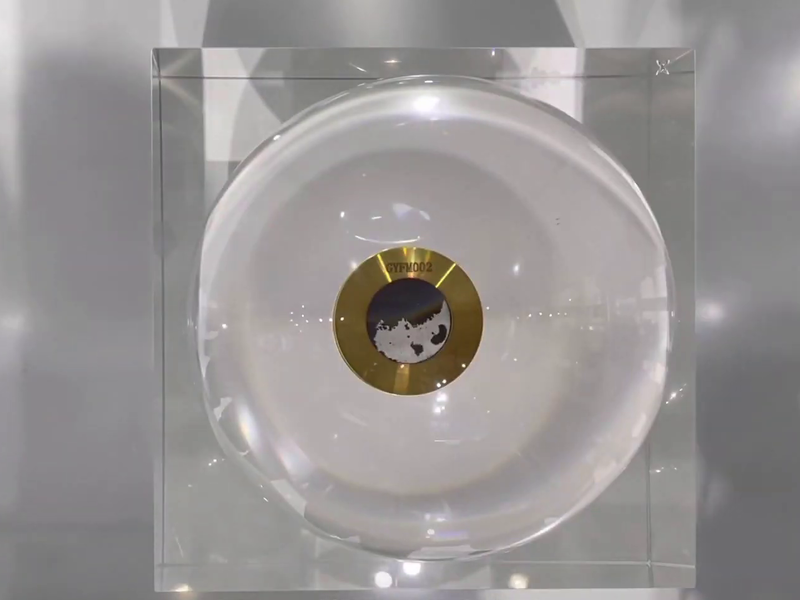A groundbreaking discovery has been made by Chinese researchers analyzing samples from the Chang'e-5 lunar mission, suggesting that the moon may have been geologically active as recently as 120 million years ago. This finding challenges previous beliefs that the moon's volcanic activities had ceased approximately 3 billion years ago.

Artist's impression of Chinese national flag shown by Chang'e 5 on the moon surface. Image Credit: China News Service
The Chang'e-5 mission returned with a collection of glass beads that have been identified as products of rapid cooling of volcanic magma. Three of these beads have been dated to around 123 million years ago, indicating a much more recent period of volcanic activity than previously thought. The beads are characterized by their small size, spherical shape, and smooth surfaces, indicating that they were formed through explosive volcanic eruptions.
Researchers from the Institute of Geology and Geophysics under the Chinese Academy of Sciences investigated over 3,000 glass beads and identified the three volcanic glass beads based on their textures, chemical compositions, and sulfur isotopes. Radiometric dating confirmed their ages and pointed to volcanism at that time. The dating method used was argon-argon dating, which measures the decay of argon-40 to argon-39.
The study, published in the journal Science, suggests that the lunar molten rocks enriched with volatiles experienced a decrease in pressure, causing the volatiles to escape as gases and form a gas reservoir above the underground magma. This led to the formation of small volcanic glass beads, which were ejected explosively onto the lunar surface. The researchers propose that the magma ascended through a complex network of fractures and faults, resulting in the formation of a gas-rich magma chamber.

Lunar soil sample collected by China's Chang'e 5 mission, displayed at Airshow China Image Credit: China News Service
The findings have sparked new questions in lunar research, including the origin of these youthful volcanic glass beads and the potential existence of even more recent lunar volcanic activities. The Chang'e-5 probe returned with 1,731 grams of lunar samples, leading to significant strides in understanding the moon's evolutionary history.
Further analysis of the glass beads revealed high abundances of rare earth elements and thorium, indicating that the magma was enriched with heat-generating elements. This suggests that the recent volcanism was related to local enrichment of heat-generating elements in the mantle sources of the magma.
The continued exploration of the moon is uncovering secrets about our closest celestial neighbor, revealing a more complex and dynamic geologic history than previously thought. The Chang'e-6 mission has also made history by collecting 1,935.3 grams of lunar samples from the far side of the moon, expected to substantially advance our understanding of the moon's history.


Add comment
Comments